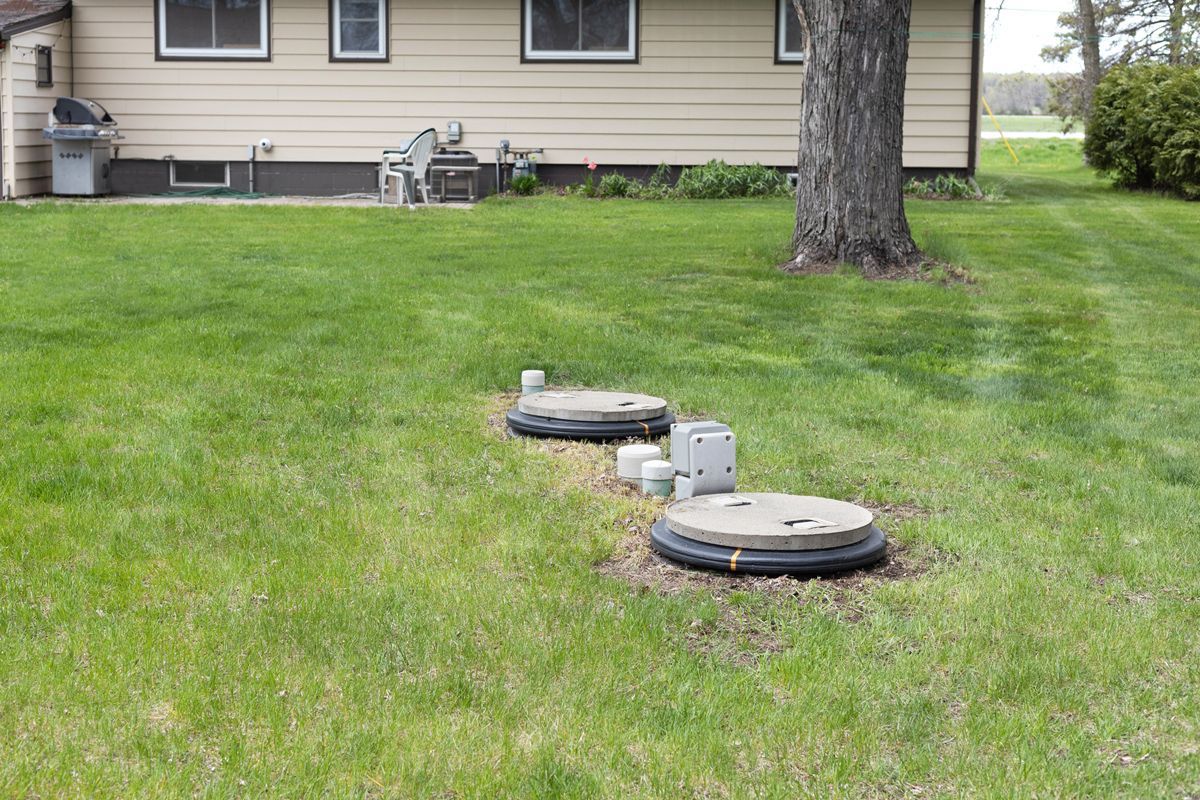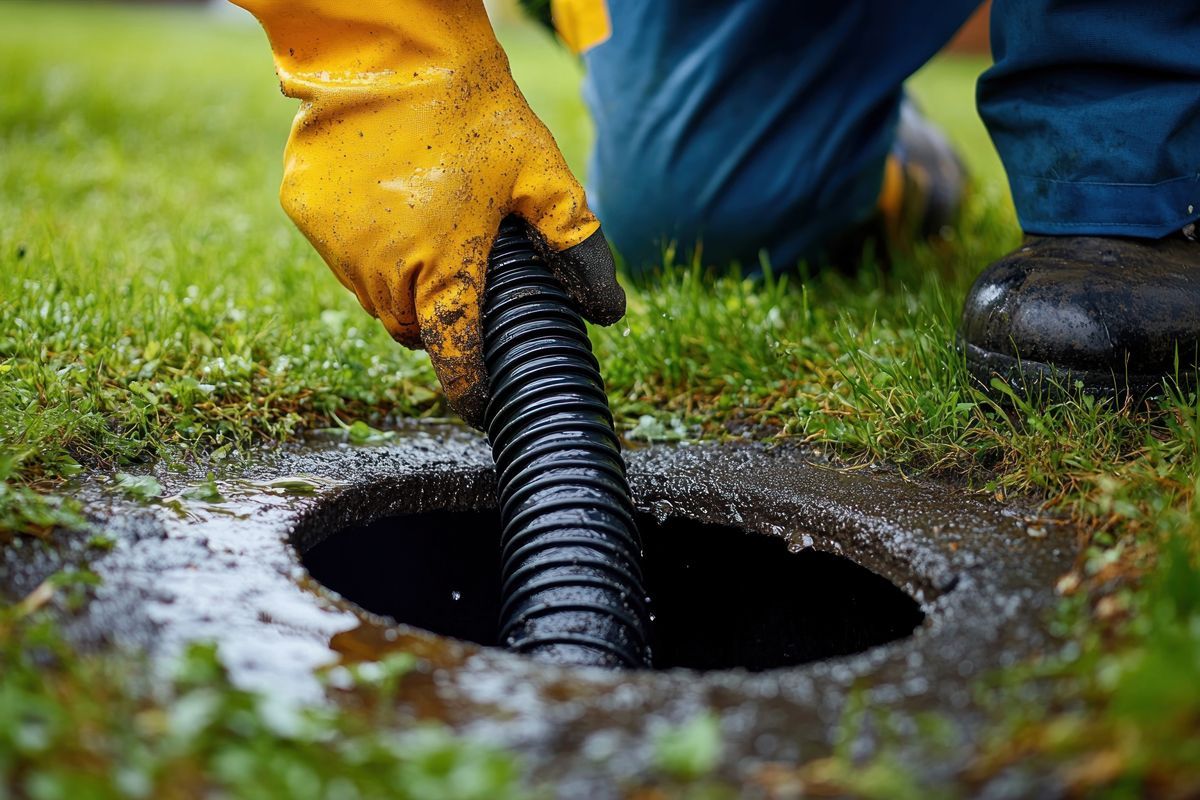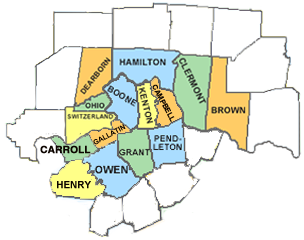Blog

March 20, 2025
Septic systems are crucial for many homes, especially in areas without access to municipal sewage systems. However, like any other system, septic systems are not immune to problems. Understanding common septic system issues and knowing how to fix them can save you from costly repairs and potential health hazards. In this guide, we’ll dive into 7 common septic system problems and provide you with practical solutions to address them effectively. 1. Clogged Drains One of the most common septic system problems is clogged drains. This can happen due to a buildup of grease, solids, or other foreign objects in the pipes leading to your septic tank. Signs of clogged drains include slow drainage, gurgling sounds, or foul odors emanating from your sinks or toilets. How to Fix It: To address clogged drains, you can try using a plunger or drain snake to clear the blockage. If the issue persists, you may need to call a professional plumber to assess the situation and possibly pump your septic tank to remove the accumulated debris. 2. Septic Tank Overflow A septic tank overflow is a serious problem that can lead to sewage backups in your home and potential environmental contamination. An overflow can occur when the tank is filled beyond its capacity, causing wastewater to back up into the drains. How to Fix It: If you suspect a septic tank overflow, avoid using water fixtures in your home and contact a septic system professional immediately. They will assess the situation, pump the tank if necessary, and inspect for any underlying issues that may have caused the overflow. 3. Tree Root Infiltration Tree roots seeking moisture and nutrients can infiltrate septic system components, including pipes and the septic tank itself. Root intrusion can cause blockages, leaks, and structural damage to your septic system. How to Fix It: To address tree root infiltration, consider removing trees or shrubs near your septic system. Additionally, consult a professional to assess the extent of the root intrusion and make necessary repairs or replacements to restore your septic system’s functionality. 4. Leaking Septic Tank A leaking septic tank poses a serious threat to your property and the environment. Leaks can occur due to corrosion, age, or physical damage to the tank, leading to wastewater seepage into the soil. How to Fix It: If you suspect a leaking septic tank, contact a septic system professional immediately . They will conduct a thorough inspection to identify the source of the leak and recommend repair or replacement options to prevent further contamination. 5. Drainfield Issues The drainfield, also known as the leach field, plays a crucial role in the septic system’s wastewater treatment process. Common drainfield problems include soil compaction, biomat formation, or hydraulic overloading, which can lead to system failure. How to Fix It: To address drainfield issues, avoid parking vehicles or placing heavy objects over the drainfield area. Consult a septic system expert to assess the drainfield’s condition, provide necessary maintenance, or recommend alternative solutions like adding a new drainfield. 6. Foul Odors Persistent foul odors in your yard or home can indicate underlying septic system problems, such as leaks, blockages, or insufficient venting. Ignoring foul odors can result in health risks and system malfunctions. How to Fix It: To address foul odors, inspect your septic system for any visible leaks, blockages, or damaged components. Ensure proper venting and consider installing carbon filters or odor-neutralizing products to mitigate odors in your home. 7. Sluggish Drainage Slow drainage in sinks, showers, or toilets may signal underlying septic system issues, such as clogs, tank overflows, or drainfield problems. Ignoring sluggish drainage can lead to backups and system failure. How to Fix It: To address sluggish drainage, start by inspecting individual drains for blockages or buildup of debris. If the issue persists, contact a septic system professional to conduct a comprehensive inspection, pump the tank if necessary, and resolve any underlying issues affecting drainage. Conclusion Understanding common septic system problems and knowing how to address them promptly is essential for maintaining a healthy and functional septic system. By following the practical solutions provided in this guide, you can prevent costly repairs, system failures, and environmental contamination. Remember to schedule regular maintenance and inspections to ensure your septic system operates efficiently for years to come. About the Author: S & E Septic, Your Trusted Local Experts Our locally owned and operated company, founded by Eugene and Rita Fryman, has been proudly serving the community for over 30 years. With a combination of unrivaled expertise and unwavering dedication, our team is committed to exceeding your expectations in every aspect of our services. Contact S&E Septic Service today to benefit from our expertise, dedication, and commitment to excellence. Let us help you take care of your property with a personalized touch that sets us apart.

March 20, 2025
Septic systems play a critical role in managing household wastewater in areas where centralized sewer systems are not available. However, one of the often-overlooked factors that can affect the performance of septic systems is ground movement. Ground movement, which includes factors like soil erosion, settling, and compaction, can have detrimental effects on the functionality and structural integrity of septic systems. In this article, we will delve into the impact of ground movement on septic systems and provide insights on how homeowners can protect their septic systems from damage. Types of Ground Movement Soil Erosion: Soil erosion is a natural process that involves the removal and transport of soil particles due to factors like water flow, wind, or human activities. In the context of septic systems, soil erosion can lead to the exposure of septic tank components such as pipes and leach fields. This exposure not only compromises the efficiency of the system but can also result in contamination of groundwater. Settling: Settling occurs when the soil beneath a septic system compresses or shifts, causing the system to become uneven or misaligned. This can lead to structural damage to components such as tanks and pipes, disrupting the flow of wastewater and potentially causing backups or seepage onto the surface. Moreover, settling can also affect the proper functioning of drainage fields, leading to poor wastewater treatment. Compaction: Soil compaction refers to the reduction of pore space between soil particles, resulting in decreased water infiltration and drainage capabilities. Compacted soil around a septic system can hinder the absorption of wastewater into the soil, leading to backups and overloading of the system. Additionally, compaction can increase pressure on septic tank walls, contributing to premature deterioration and leaks. Effects of Ground Movement on Septic Systems Reduced Treatment Efficiency: Ground movement can disrupt the natural flow of wastewater through a septic system, leading to inadequate treatment of sewage. When settling or compaction occurs, the distribution of effluent to drain fields may be compromised, resulting in poor filtration and increased risk of contamination. This can pose significant health hazards and environmental concerns. Structural Damage: The structural components of a septic system, such as tanks, pipes, and drain fields, are vulnerable to damage caused by ground movement. Settling can cause pipes to crack or become misaligned, while compaction can put pressure on tank walls, leading to leaks or collapse. Structural damage not only impairs the functionality of the system but can also be costly to repair or replace. Groundwater Contamination: One of the most serious consequences of ground movement on septic systems is the potential for groundwater contamination. When soil erosion exposes septic system components or settling disrupts the integrity of the system, untreated wastewater can seep into the surrounding soil and eventually reach groundwater sources. This contamination can have far-reaching implications on water quality and public health. Mitigating Damage from Ground Movement Regular Inspections: Homeowners should schedule routine inspections of their septic systems to identify signs of ground movement and potential damage. Professional septic system inspectors can assess the condition of the system, including soil stability around components, and recommend preventive measures to mitigate the impact of ground movement. Proper Maintenance: Maintaining a septic system in good working condition is essential for minimizing the effects of ground movement. Regular pumping of the septic tank, avoiding excessive water usage, and refraining from planting trees or shrubs near the system can help prevent compaction and settling of the soil around the septic components. Professional Repairs: In case of visible damage or signs of ground movement affecting the septic system, homeowners should seek the expertise of licensed septic system professionals for repairs. Prompt action can prevent further deterioration of the system and ensure its continued functionality. Conclusion Ground movement is a prevalent threat to the stability and performance of septic systems, requiring proactive measures from homeowners to safeguard their investments. By understanding the types of ground movement, its effects on septic systems, and the importance of regular maintenance and inspections, homeowners can protect their septic systems from potential damage. Prioritizing the health and longevity of septic systems through awareness and appropriate action can contribute to a sustainable and efficient wastewater management system. About the Author: S & E Construction and Septic Service, Your Trusted Local Experts Our locally owned and operated company, founded by Eugene and Rita Fryman, has been proudly serving the community for over 30 years. With a combination of unrivaled expertise and unwavering dedication, our team is committed to exceeding your expectations in every aspect of our services. Contact S&E Construction and Septic Service today to benefit from our expertise, dedication, and commitment to excellence. Let us help you take care of your property with a personalized touch that sets us apart.

March 20, 2025
Spring brings a sense of renewal and growth, signaling the perfect time to give your septic tank the care it deserves. As a crucial component of your home’s waste management system, maintaining your septic tank is essential for a healthy and functional household. By following these sustainable spring tips for septic tank maintenance, you can ensure your system operates seamlessly throughout the year. 1. Inspect for Leaks and Odors Begin your spring septic tank maintenance routine by conducting a thorough inspection for any leaks or foul odors near the tank area. If you notice any signs of leakage or detect unusual smells, it’s crucial to address these issues promptly to prevent further damage to your septic system. 2. Pump Regularly Scheduled pumping is key to maintaining a healthy septic tank . Spring is an ideal time to schedule a professional pumping service to remove accumulated solids and prevent potential backups. Regular pumping helps to maintain the balance of your septic system and extends its lifespan. 3. Monitor Water Usage With the arrival of spring, household water usage tends to increase due to outdoor activities like gardening and lawn maintenance. Be mindful of your water consumption to avoid overloading your septic tank. Implement water-saving practices such as fixing leaks, installing low-flow fixtures, and spacing out laundry and dishwasher loads. 4. Avoid Chemical Overuse Harsh chemicals can disrupt the natural balance of bacteria in your septic tank, leading to system malfunctions. Opt for septic-safe cleaning products and avoid flushing items like grease, wipes, and harsh chemicals down the drain. Instead, consider using environmentally friendly alternatives to protect your septic system and the environment. 5. Monitor Drainage Field The drainage field is a critical part of your septic system that disperses treated wastewater into the soil. Inspect the drainage field for signs of standing water, soggy patches, or strong odors, as these may indicate drainage issues. Keep the area clear of debris and plant roots to ensure optimal functioning. 6. Landscaping Considerations Spring is a great time to assess your landscaping around the septic tank and drain field. Avoid planting trees or shrubs with invasive roots near the system, as they can damage pipes and obstruct drainage. Plant grass or shallow-rooted vegetation to prevent complications and promote proper drainage. Conclusion By incorporating these sustainable spring tips for septic tank maintenance into your seasonal routine, you can keep your system running smoothly and efficiently. Remember that regular maintenance and attention to detail are key to preserving the health and longevity of your septic tank. Embrace the spring season as an opportunity to rejuvenate your home’s lifeline and promote a sustainable environment through proper septic care. About the Author: S & E Septic, Your Trusted Local Experts Our locally owned and operated company, founded by Eugene and Rita Fryman, has been proudly serving the community for over 30 years. With a combination of unrivaled expertise and unwavering dedication, our team is committed to exceeding your expectations in every aspect of our services. Contact S&E Septic Service today to benefit from our expertise, dedication, and commitment to excellence. Let us help you take care of your property with a personalized touch that sets us apart.

March 20, 2025
As unseen heroes of our homes, septic tanks quietly manage our waste, ensuring smooth operations without much fuss. However, these underground systems require regular care and maintenance to prevent malfunctions and costly repairs. One crucial aspect of septic tank maintenance is regular pumping. In this article, we delve into the why behind this necessary task, shedding light on the importance of getting your tank pumped regularly. Understanding the Septic System Before diving into the significance of pumping your septic tank, it’s essential to understand how these systems work. Septic tanks function by separating solid waste from liquid waste. The solid waste settles at the bottom of the tank, while the liquid effluent flows out into the drain field for further treatment. Over time, solid waste accumulates in the tank, necessitating pumping to remove these solids and maintain the system’s efficiency. Signs Your Septic Tank Needs Pumping Detecting when it’s time to pump your septic tank is crucial for preventing backups and system failures. Some common signs that indicate your tank is due for pumping include slow drains, foul odors around the drain field, gurgling sounds in the plumbing, and wastewater backups. Ignoring these warning signs can lead to a host of issues, such as clogged pipes, sewage backups, and environmental contamination. Benefits of Regular Septic Tank Pumping Regular septic tank pumping is key to extending the lifespan of your septic system and ensuring its optimal performance. By removing accumulated solids from the tank, you prevent blockages in the drain field and maintain proper waste treatment. Pumping also reduces the risk of septic system failures, which can be messy, inconvenient, and expensive to repair. Additionally, routine pumping helps identify potential issues early, allowing for timely intervention and preventing costly repairs down the line. Environmental Impact Beyond the benefits to your septic system, regular tank pumping is also beneficial for the environment. A well-maintained septic system that receives timely pumping is less likely to leak contaminants into the soil and groundwater. By taking proactive steps to care for your septic tank, you contribute to preserving water quality and safeguarding the environment for future generations. Expert Recommendations To ensure the proper maintenance of your septic system, it’s advisable to follow expert recommendations for pumping frequency. The general guideline is to have your septic tank pumped every 3-5 years, but this can vary based on factors such as household size, water usage, and tank capacity. Consulting with a professional septic service provider can help determine the ideal pumping schedule for your specific circumstances. Conclusion In the intricate world of septic tank maintenance, regular pumping stands out as a crucial task that should not be overlooked. By understanding the importance of pumping your septic tank and following a consistent maintenance schedule , you can keep your system running smoothly, prevent costly issues, and contribute to environmental sustainability. Remember, a well-maintained septic system is a reliable one, so don’t wait until problems arise! Schedule your tank pumping today and enjoy peace of mind knowing your underground hero is in tip-top shape. About the Author: S & E Septic, Your Trusted Local Experts Our locally owned and operated company, founded by Eugene and Rita Fryman, has been proudly serving the community for over 30 years. With a combination of unrivaled expertise and unwavering dedication, our team is committed to exceeding your expectations in every aspect of our services. Contact S&E Septic Service today to benefit from our expertise, dedication, and commitment to excellence. Let us help you take care of your property with a personalized touch that sets us apart.

